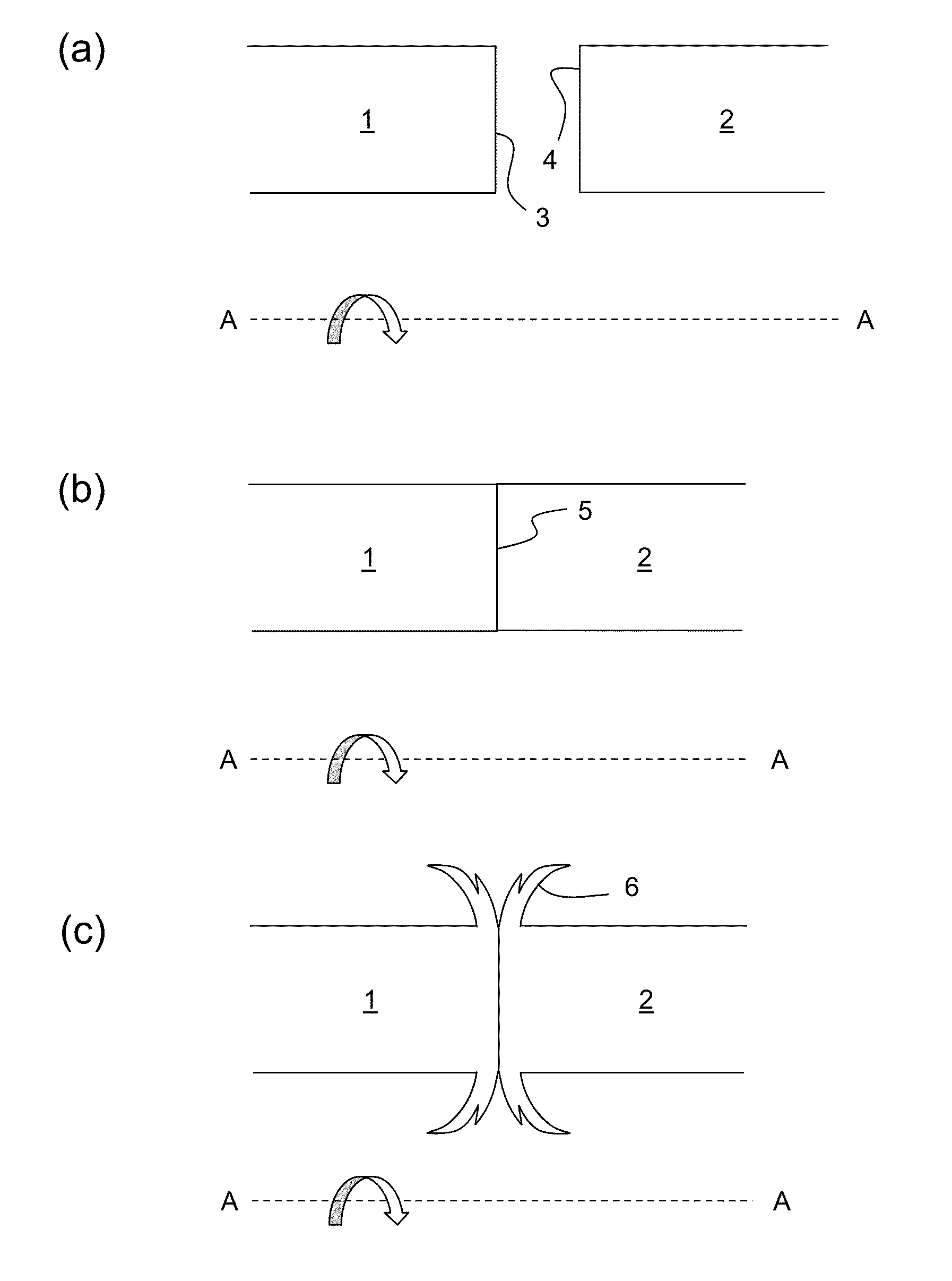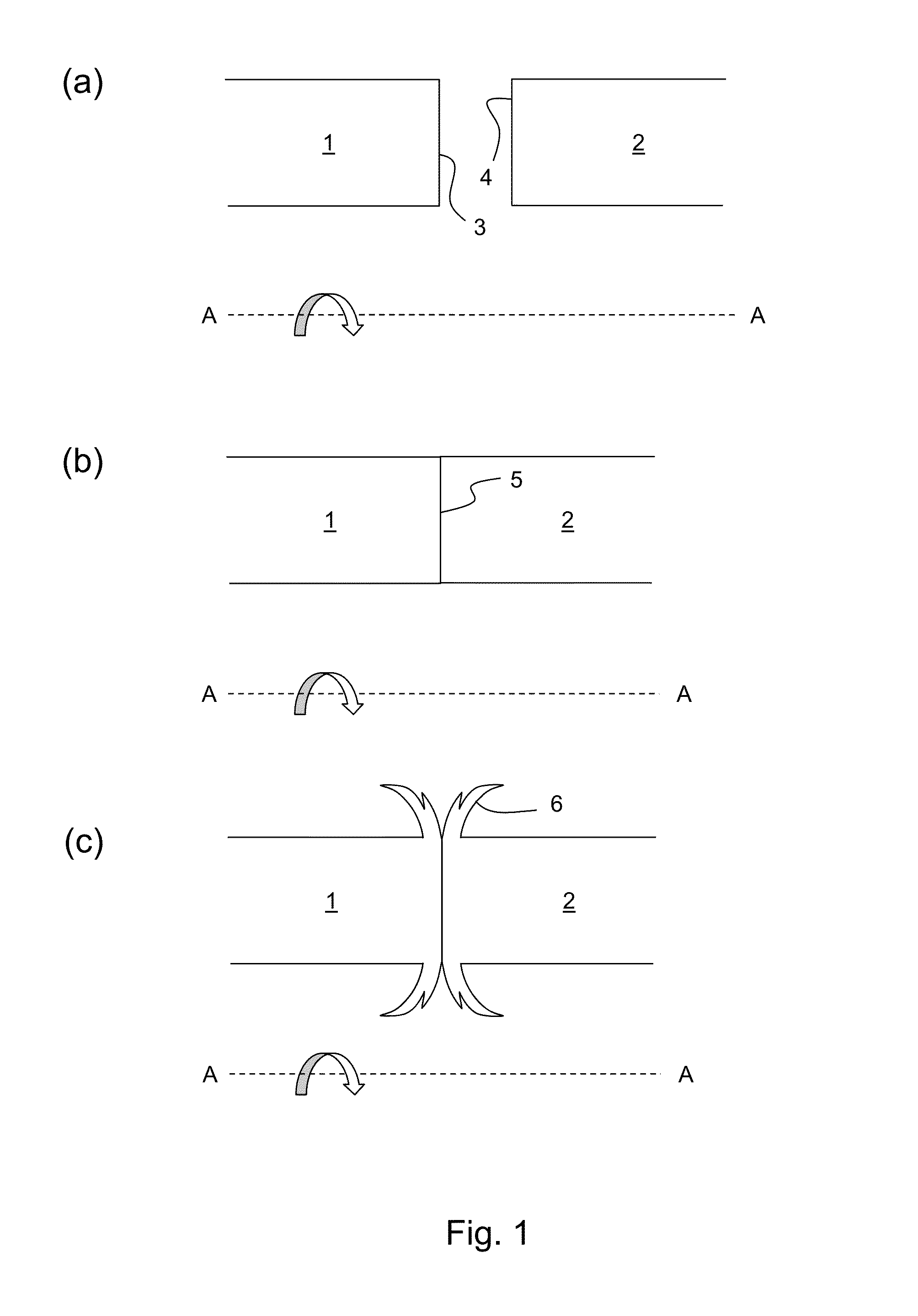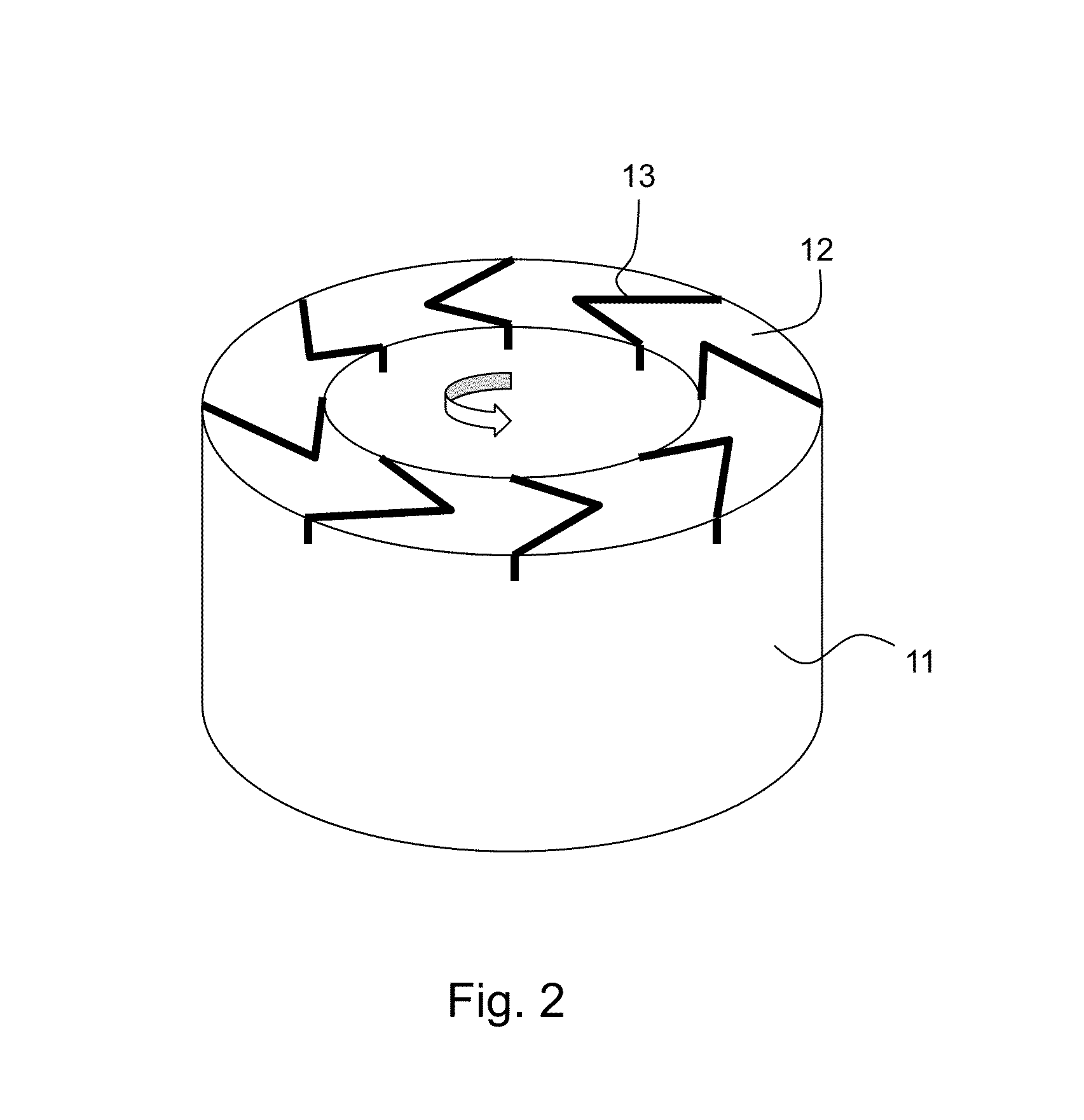Friction welding
a technology of friction welding and welding ring, which is applied in the direction of turbines, manufacturing tools, mechanical equipment, etc., can solve the problems of inefficient expulsion, preventing or hindering the removal of interfacial contaminants, and the inability to optimize the distribution of energy input into the weld
- Summary
- Abstract
- Description
- Claims
- Application Information
AI Technical Summary
Benefits of technology
Problems solved by technology
Method used
Image
Examples
Embodiment Construction
[0036]FIG. 1(a) shows schematically a longitudinal cross-section through a pair of conventional tubular workpieces 1, 2 in readiness to undergo inertia rotary friction welding. The workpieces are aligned on a common axis A-A and have respective end faces forming weld surfaces 3, 4. The left hand workpiece 1 is attached to a flywheel which is rotated at a pre-determined speed, indicated by the solid arrow.
[0037]As shown in FIG. 1(b), the workpieces are brought together so that the weld surfaces 3, 4 make contact. During the conditioning period friction raises the temperature at the weld interface 5.
[0038]When the temperature at the interface 5 is high enough to sufficiently plasticise the material of the workpieces 1, 2, upsetting progressively pushes the workpieces together and flash 6 is expelled sideways from the interface.
[0039]However, the conventional welding process allows undesirable contaminants and other undesirable features to be retained at the weld interface during weldi...
PUM
| Property | Measurement | Unit |
|---|---|---|
| angles | aaaaa | aaaaa |
| chevron angle | aaaaa | aaaaa |
| chevron angle | aaaaa | aaaaa |
Abstract
Description
Claims
Application Information
 Login to View More
Login to View More - R&D
- Intellectual Property
- Life Sciences
- Materials
- Tech Scout
- Unparalleled Data Quality
- Higher Quality Content
- 60% Fewer Hallucinations
Browse by: Latest US Patents, China's latest patents, Technical Efficacy Thesaurus, Application Domain, Technology Topic, Popular Technical Reports.
© 2025 PatSnap. All rights reserved.Legal|Privacy policy|Modern Slavery Act Transparency Statement|Sitemap|About US| Contact US: help@patsnap.com



